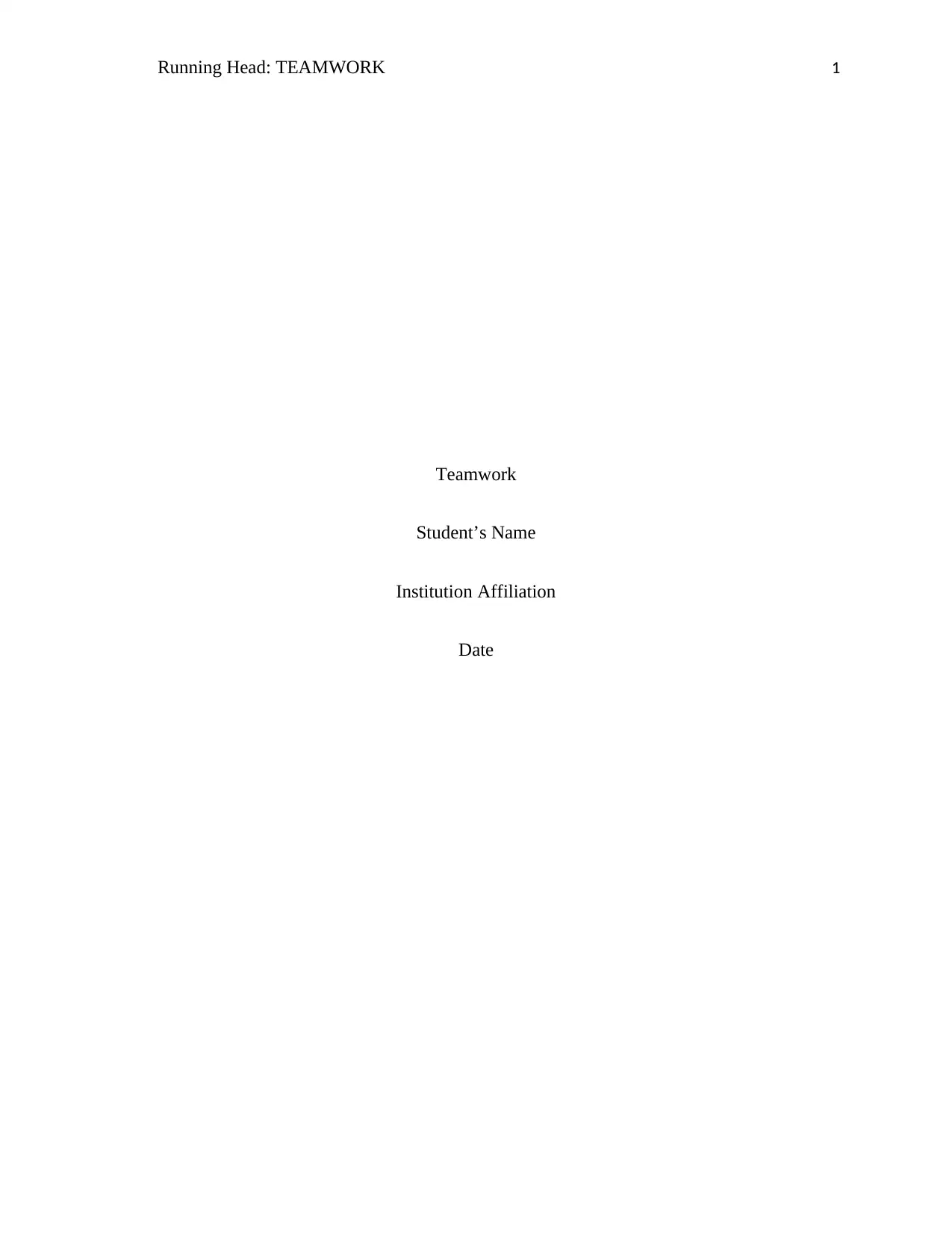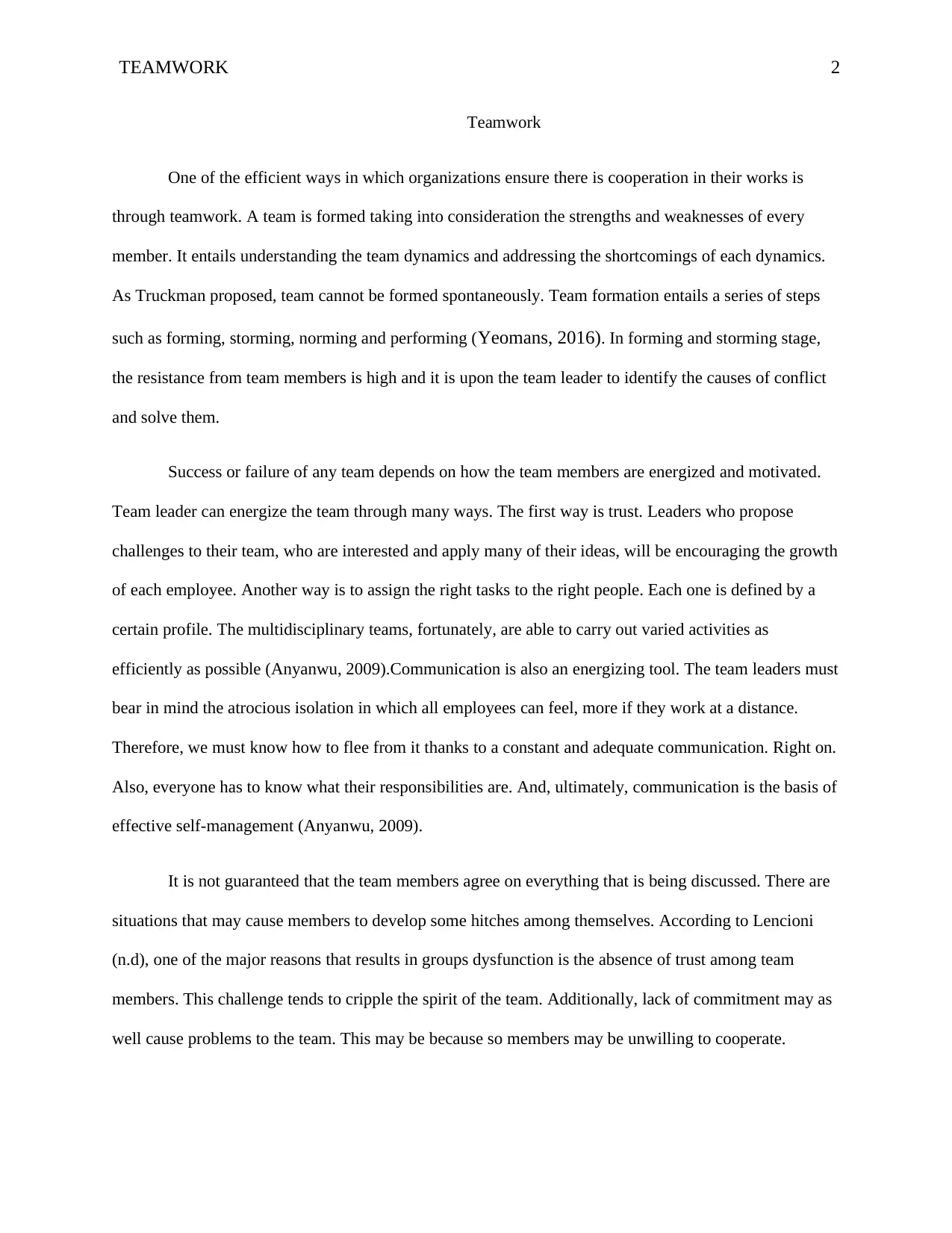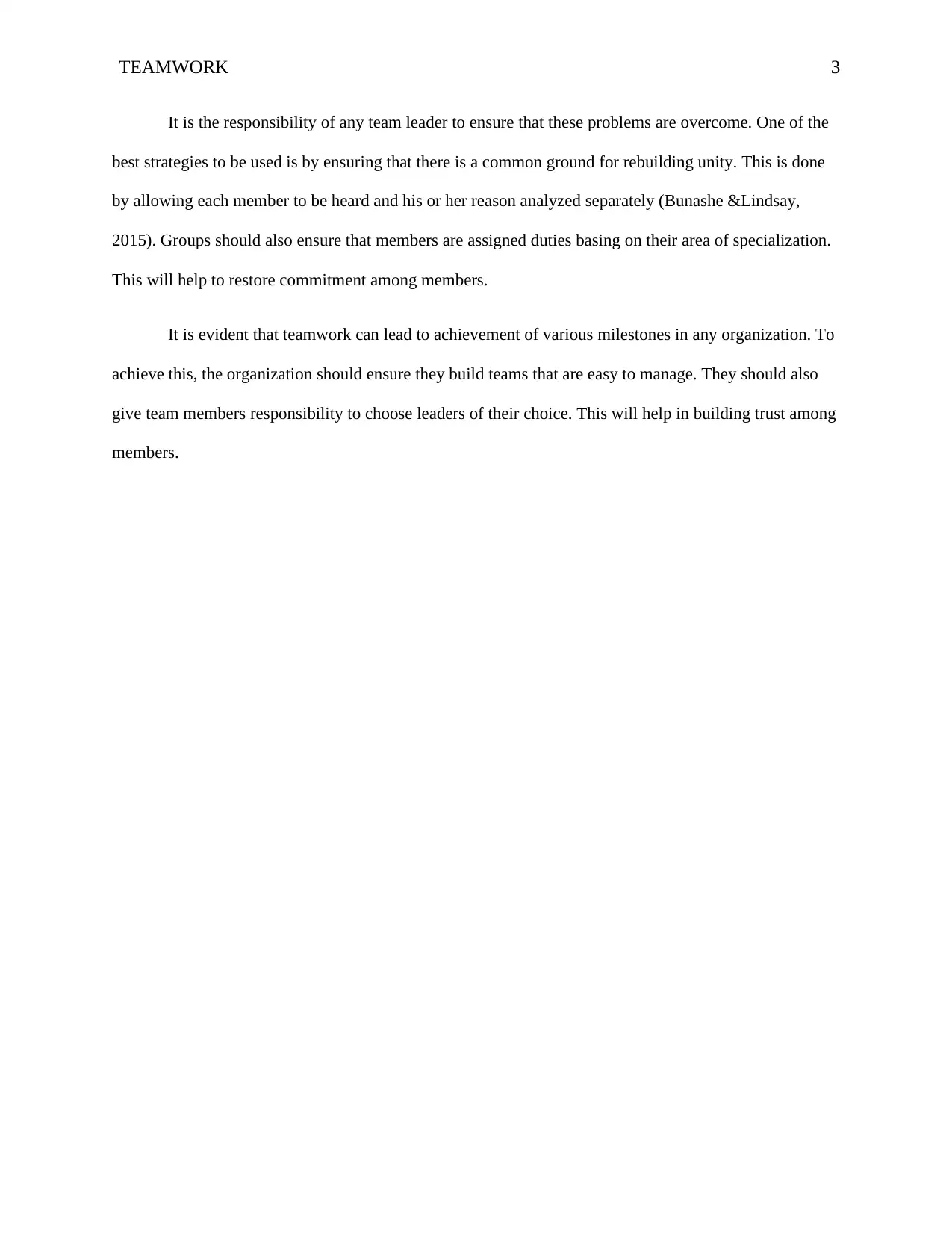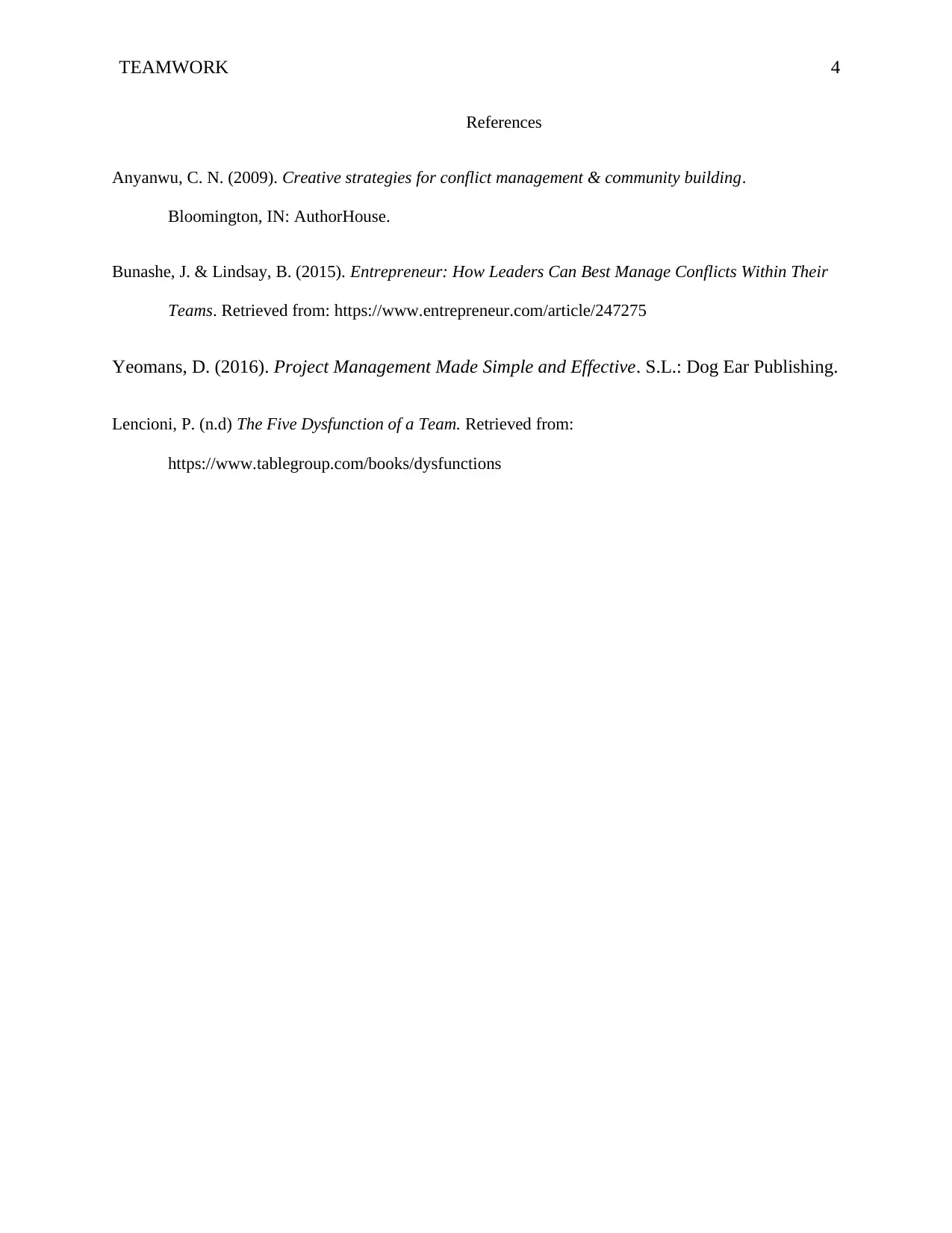Teamwork Report: Strategies for Effective Conflict Management
VerifiedAdded on 2023/06/03
|4
|647
|337
Report
AI Summary
This report examines the dynamics of teamwork, focusing on conflict management strategies within a team environment. It explores the stages of team formation, as proposed by Tuckman, highlighting the challenges and importance of leadership in addressing conflicts and fostering cooperation. The report emphasizes the role of trust, appropriate task allocation, and effective communication in energizing and motivating team members. It also identifies potential dysfunctions, such as lack of trust and commitment, and suggests strategies to overcome these challenges, including establishing a common ground and assigning duties based on specialization. The report concludes by emphasizing the importance of building manageable teams and empowering members to choose their leaders to foster trust and achieve organizational milestones.
1 out of 4











![[object Object]](/_next/static/media/star-bottom.7253800d.svg)